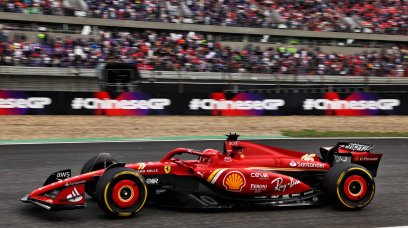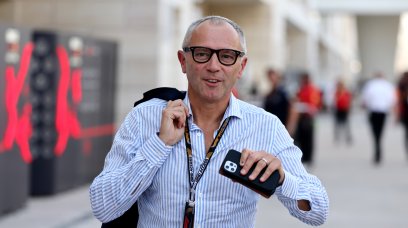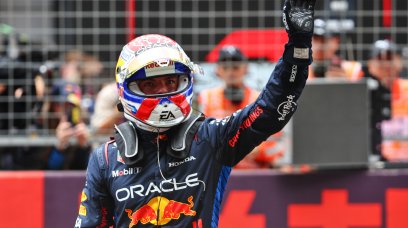Over 300,000 people flocked to Monza for the first time in two years for the 2022 Italian Grand Prix. Last year the event ran at half capacity due to Covid restrictions with just 16,000 tickets sold for race day. Questions over the future of the circuit were raised due to the lack of interest and ever-expanding calendar , given that it only has a contract that runs until 2025. Against this backdrop a considerable influx of fans visited the track this year for its centennial running, however they clearly struggled to handle the masses of spectators effectively. Many (including this writer) were left unimpressed with the general organisation of event, which largely involved queuing in 27°C heat for up to an hour to purchase ‘tokens’ and waiting to be searched by security stewards. Only the tokens could be used to purchase refreshments, instead of the age old (and frankly proven) system of paying with money. This resulted in even larger queues as vendors counted out each one individually to verify the amount. You could purchase an NFC wristband which worked the same as a contactless credit card and eliminated the need for carrying around a bunch of physical tokens, however midway through Saturday the system went down and they could not be used – nor could fans request refunds. Token purchase points also started running out of physical tokens, forcing them to ask nearby vendors if they had any or issue paper receipts. It was all rather cumbersome and resulted in people missing action on track they paid to see. On the Sunday after the race most of the food vendors had closed and tents serving alcohol or regular drinks had run out, meaning if you had any leftover tokens, you could not spend them or get a refund. Couple that with waiting times to get into the grandstands due to the airport-style security made of up of just four or six people sorting through bags and searching people, you had to be efficient with planning or else you risked missing the on-track sessions. Why the need for such vigorous security? I remember going to the British Grand Prix in 2017 just over a month after the Manchester Arena Bombings and the security was not nearly as tight and tiresome as this. What also baffled me was the inconsistency of it all. On Saturday at the Turn 1 Prima Variante grandstand you had security stewards waving people through with no searches due to how busy it got before qualifying, but then if you tried to get in afterwards to watch Formula 2 you would be searched. Some of the items they were looking for were justified such as sharp items, flares (which still somehow made it through), glass, drugs, chainsaws etc… But they also did not allow power banks for smart phones, which meant you were haemorrhaging battery life on 5G all day looking at timing information and posting to social media. This policy seems a bit unsafe if you need to contact anyone in an emergency or find yourself lost outside of the track and need to consult Google Maps. The track also needs to work on its infrastructure, far too many people were nearly run over by cars and mopeds using the access roads in the infield section. These had to be used if you wanted to get from one section of the circuit to the other, or in my case reach the grandstand I paid for from the entry point you get brought to using the shuttle busses from Monza station. F1 Chief Executive Officer, Stefano Domenicali has already warned the track that “history is not enough” and that it must “modernise” in the wake of the poor experience. “The grand prix deserves to be on the calendar but, as I have said before, history is no longer enough to be able to secure your place in the F1 world championship today,” he told Italian media. “The works are needed for the modernisation of the venue and to help fans experience the grand prix in the best possible way.”
Importance of knowing what’s happening
F1 races are one of those weird events where if attend in person, you see less than what you would if you watched it on TV at home. Even though there are big screens dotted around the circuit some of these are only reserved for the select few in the grandstands, if you’re in general admission areas it depends on where they are situated. Knowing what's going on requires a bit of knowledge, good phone signal, and impeccable organisation from the circuit. While F1 is doing its best efforts to make sure there is something happening all the time when there is an intermission with the on-track sessions, during qualifying very little information is given to fans on who has dropped out of Q1 or Q2. At Monza they cut to a DJ who - despite his best efforts - seemed detached from the action that was happening on track. A simple list of drivers knocked out on the big screens would work, rather than a camera on a DJ or fans in the stands. There are also very few vantage points at Monza for fans compared to other tracks such as Silverstone and Circuit de Barcelona-Catalunya. These are both smaller sites than Monza, but still manage to give fans in general admission and those with roaming grandstand tickets enough vantage points to see the cars from different points at the track.
Monza responds
Monza issued a statement in the days after the race apologising for the “discomfort” some fans might have experienced due to “certain inconveniences,” vowing to investigate and take “consequent measure” to ensure it doesn’t happen again. The reality is that Monza and F1 must learn from this experience as the popularity of the sport booms and more fans attend races at the ‘classic’ venues on the calendar. Already this season there was complaints about fan abuse at circuits prompting the ‘Drive it Out’ campaign to be launched by F1 and the FIA, designed to tackle instances of racism, female harassment, and homophobic chants. As the futures of races is becoming more topical while the calendar expands to new locations, it is important these ‘classic’ tracks invest in ensuring the fan experience is up to standard. Silverstone has proven over the years that reinvesting in the infrastructure yields good results. In the nine years I attended the British Grand Prix as a fan between 2012 and 2021, the track improved ten-fold with its accessibility, security protocols, and outside traffic management. But it makes it all rather farcical if fans are paying increasing amounts to go and see races but not being able to watch it due to unreasonable queuing and poor management, something that has already been highlighted at the Spanish Grand Prix earlier this year. For the most part F1 does its part in providing a top-quality product on track, but more dialogue is needed to establish a minimum standard for these events to be considered world-class for the fan experience.
Most read























